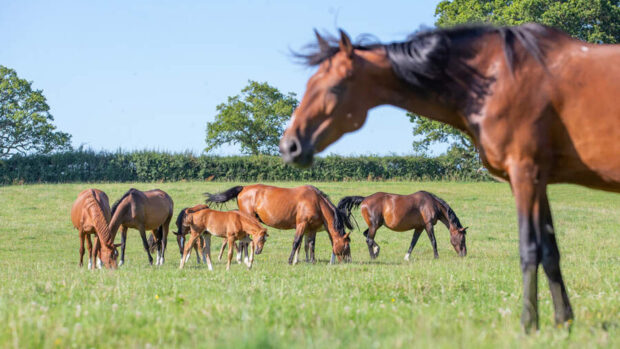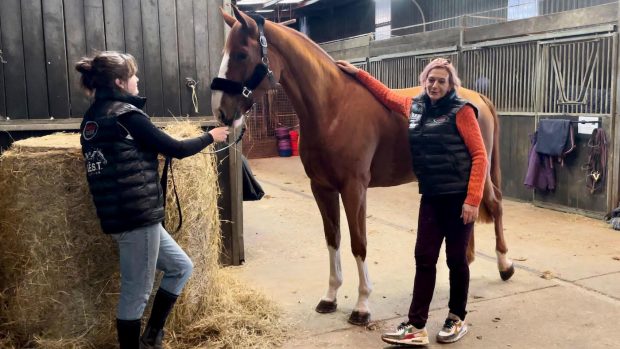The most vital piece of equipment on our yard is a long-handled pink feather duster! I buy young horses in Ireland, where they’ve often been running in a 40-acre field and you can’t get near them, let alone handle them. So once they’re in the stables here, we let them sniff the feathers, and then move the duster over their bodies. Gradually they get used to the feel of being touched.
Feeding
When the horses arrive, they’re poor and they’re frightened — too frightened to put their head in a bucket because they’ve been used to drinking from a river.
We leave them to settle with a deep straw bed, a bit of haylage on the floor and a bucket of water at the side and, as long as they’ve plucked up courage to drink, we know they won’t be too dehydrated.
You can’t suddenly give lots of feed, so we start with a little bit of mix and chaff — they’re more likely to play around with mix than cubes. Once they’re eating, I go the old-fashioned route of bran, chaff and barley, plus limestone flour for calcium and Spillers Equivite vitamin and mineral supplement.
From the end of January to the beginning of May, we put the work in for the show season, though our horses aren’t fat or overdone. I like soya flakes from Charnwood Milling Company for their coats and haylage for when they’re on the lorry, because the water content helps prevent dehydration.
Tack
I like mouthing bits with keys to start off with, either straight-bar or jointed, depending on what the horse prefers. We usually then switch to straight-bar bits with vulcanised rubber mouthpieces, though I’ve shown one horse in a key bit because he liked it so much.
I spend ages deciding on the in-hand bridle for each horse, choosing the right browband and thickness of noseband to complement each head. On horses with no white markings, I like white rawhide browbands, which were always used many years ago, but I have one horse who is best suited to a brass browband.
When I’m teaching horses to trot up, I often use an elastic bungee rein, which is less likely than side-reins to cause a panic if they buck. If you need them to drop their head a little, it goes over the poll and fastens between the legs or to a low clip on the roller. If a horse carries his head a little low, I clip it to the top D-ring on the roller to get him to pick himself up a bit.
|
||
 |
||


 Get up to 19 issues FREE
Get up to 19 issues FREE TO SUBSCRIBE
TO SUBSCRIBE 


